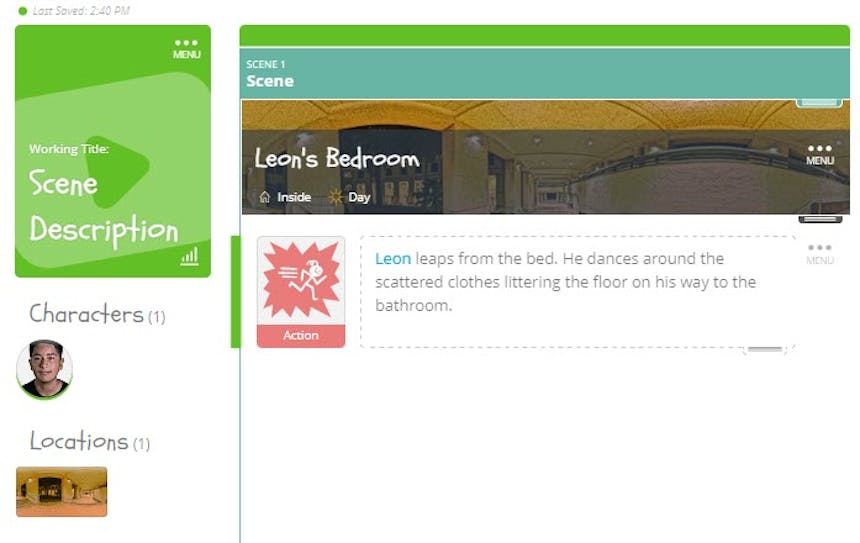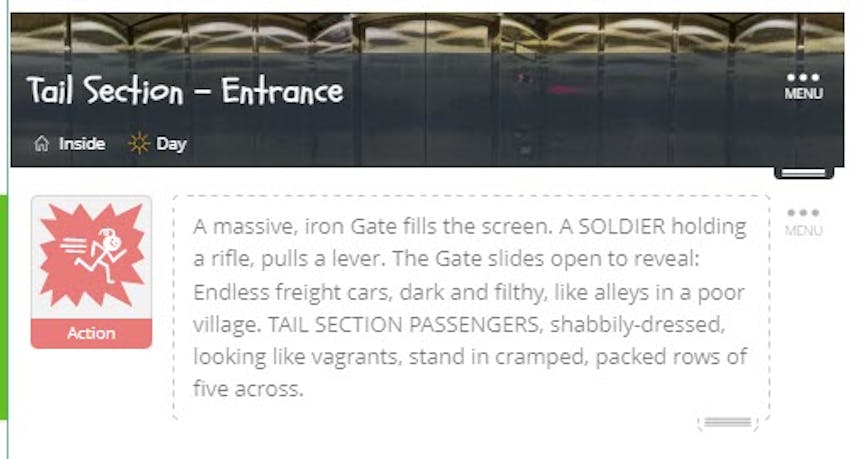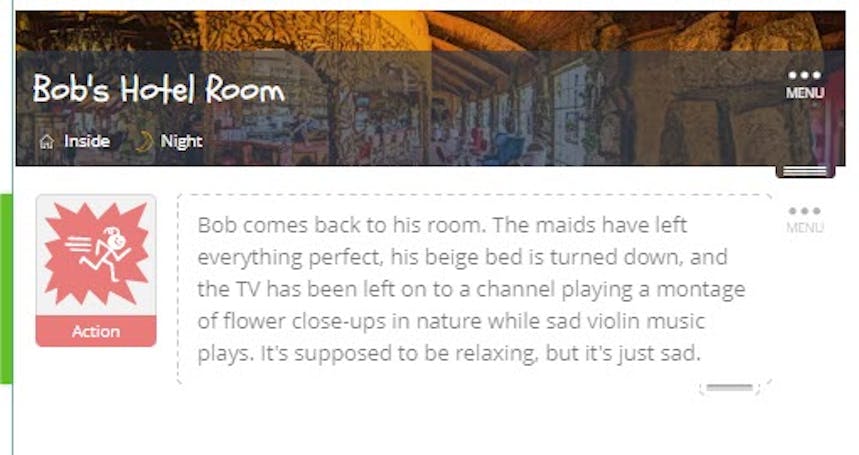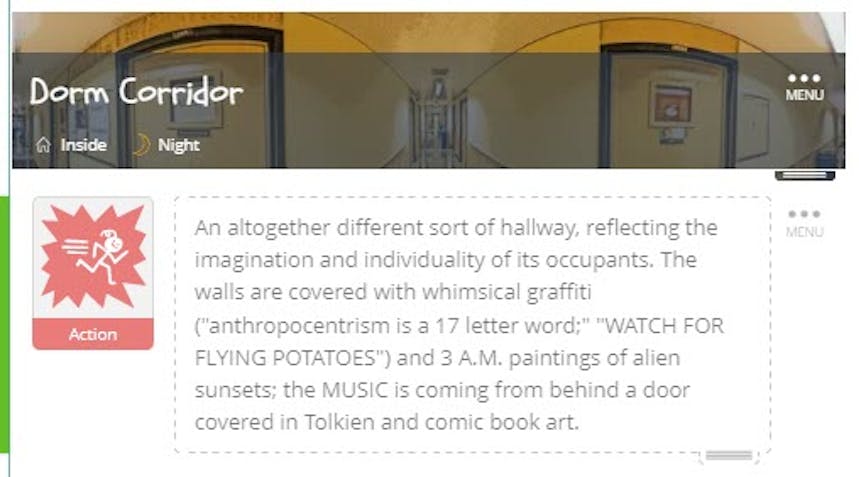With one click
Export a perfectly formatted traditional script.
How do you introduce a scene in a screenplay? Ideally, I want to write a scene description that is engaging, clear, and conjures visuals from the page. I want the reader to breeze through my script, and have the scene descriptions subtly work to pique their interest, bringing them deeper and deeper into the world of my story.
Export a perfectly formatted traditional script.


These are the qualities I want my scene descriptions to have, but alas, I am a wordy gal. I am, can’t help it. My first drafts are often plagued with long descriptions, and my scene descriptions are no exception. Here are a few tips I use to help get my scene descriptions more in line with what you’ll see in traditional screenplays!
Don’t worry too much; the reader wants to buy what you’re selling. If you set a scene in a bedroom, they’re going to imagine a bed, dresser, closet or whatever other bedroom accessories. You don’t have to describe every nook and cranny of a space!
Here’s what a scene description looks like in SoCreate. Describe the scene using the Action stream item, placed immediately beneath your Location.

Here’s how that same scene description will look if you export your screenplay from SoCreate to the traditional screenplay format.
Leon leaps from the bed. He dances around the scattered clothes littering the floor on his way to the bathroom.
Like I said before, as a reader, you’re already picturing the bedroom. This description is doing more than just describing the location: it’s showing us the main character, Leon, waking up in it.
Someone described it to me this way back in college: “Don’t talk about the photo. Talk about the movie!” The photo is the image you have in your mind of where the scene is taking place. The movie is what’s happening in that setting. What’s the action occurring there? Describe that!
Take the above scene description example, for instance. It describes the state of the space; it’s messy, which could say something about the character Leon. I describe how Leon’s interacting with the space. He’s leaping, and he’s dancing. All of this is more information about the character.
Whip those scene descriptions into shape and make them do more work than they’re doing in your first drafts. Make them speak to other things like character, mood, and tone!
Don’t direct from the page. It can confuse and slow down the reader as they try to picture what’s happening with the camera. The future director is going to direct however they want, so your camera directions won’t be helping them.
Now I’ll contradict myself! Sometimes camera directions are okay. For example, you need to use a close up to reveal something important. Something along those lines is fine, but err on the side of caution, and keep the camera directions to a low minimum!
No writer is perfect, I’m not, but if you’re aware of your shortcomings and problem areas, then you can work on them! I know I’m verbose, so now I dedicate a whole editing pass to tightening up my descriptions. Ain’t no shame in being wordy; it’s just about taking that into consideration so that you can work on it, and edit it down to what’s industry standard.
Scott Myers, who writes the official screenwriting blog of The Black List called “Go Into The Story,” summed up scene descriptions well. “Minimum words. Maximum impact.” He goes on to outline these scene description principles:
Keep scene descriptions to three lines of paragraph
Think of scene descriptions more like poetry than prose
Complete sentences are not necessary
Visuals are key
Include strong verbs
Create a visceral sense of place – what does it feel like?
In SoCreate, this scene description would look as follows.

Here’s how that same scene description will look if you export your screenplay from SoCreate to the traditional screenplay format.
A massive, iron Gate fills the screen. A SOLDIER holding a rifle, pulls a lever. The Gate slides open to reveal: Endless freight cars, dark and filthy, like alleys in a poor village. TAIL SECTION PASSENGERS, shabbily-dressed, looking like vagrants, stand in cramped, packed rows of five across.
In SoCreate, this scene description would look as follows.

Here’s how that same scene description will look if you export your screenplay from SoCreate to the traditional screenplay format.
Bob comes back to his room. The maids have left everything perfect, his beige bed is turned down, and the TV has been left on to a channel playing a montage of flower close-ups in nature while sad violin music plays. It's supposed to be relaxing, but it's just sad.
In SoCreate, this scene description would look as follows.

Here’s how that same scene description will look if you export your screenplay from SoCreate to the traditional screenplay format.
An altogether different sort of hallway, reflecting the imagination and individuality of its occupants. The walls are covered with whimsical graffiti ("anthropocentrism is a 17 letter word;" "WATCH FOR FLYING POTATOES") and 3 A.M. paintings of alien sunsets; the MUSIC is coming from behind a door covered in Tolkien and comic book art.
Ideally, everything in your script will work together cohesively to tell the story. You want your scene descriptions to work for you, not to overwhelm the page.
With that, happy writing, and/or editing! Hopefully, these tips help to make those scene descriptions do more than describing the setting in your script.